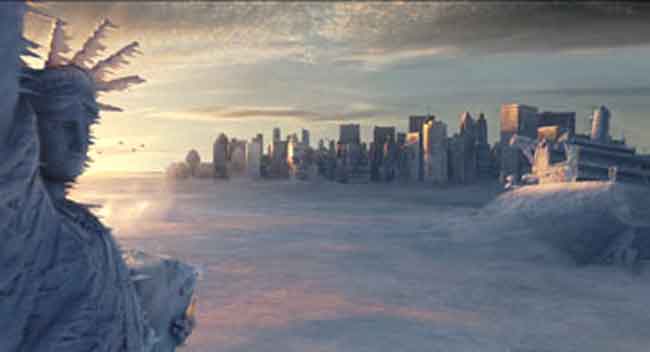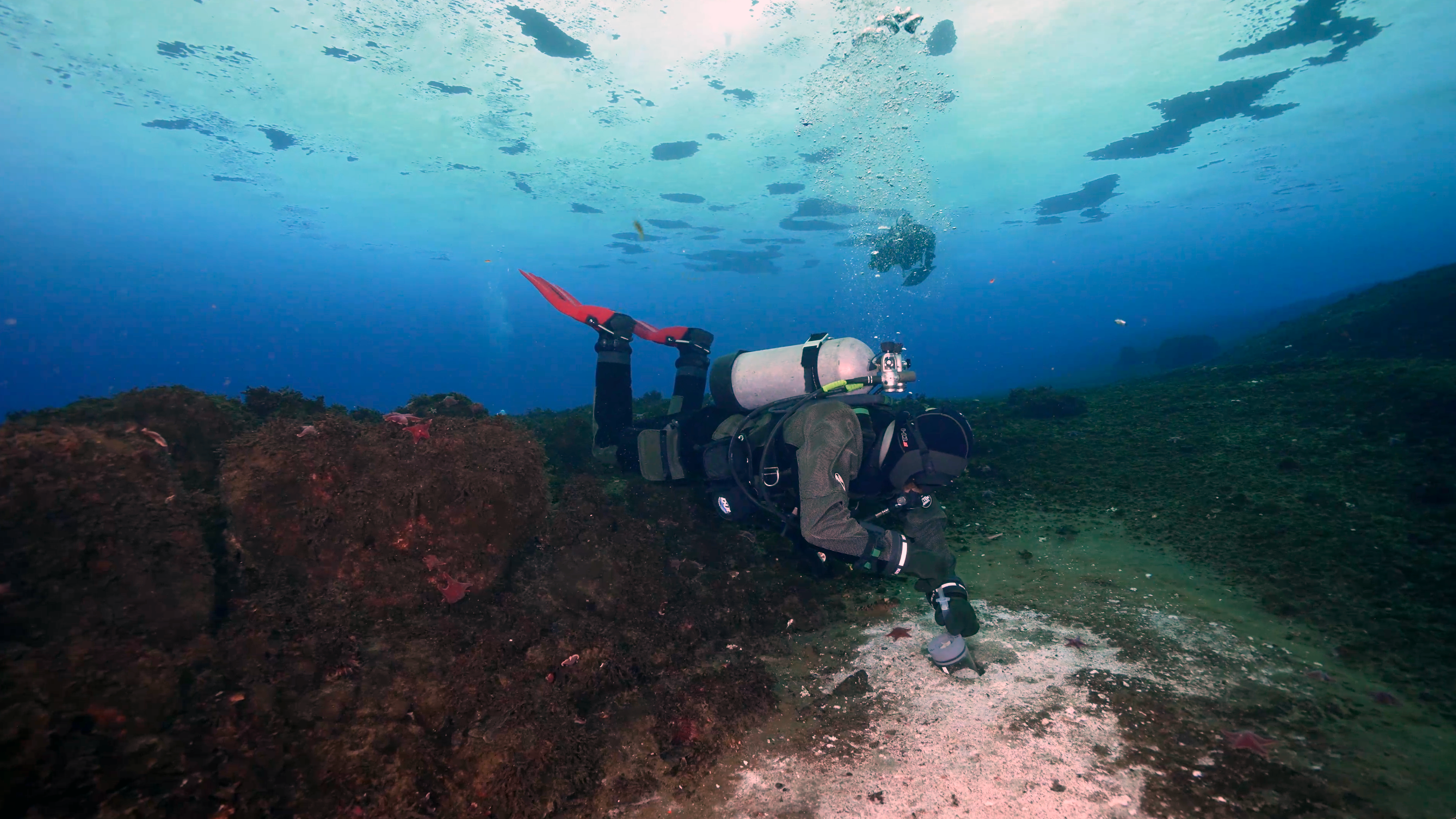Big Freeze: Earth Could Plunge into Sudden Ice Age

In the film, "The Day After Tomorrow," the world gets gripped in ice within the span of just a few weeks. Now research now suggests an eerily similar event might indeed have occurred in the past.
Looking ahead to the future, there is no reason why such a freeze shouldn't happen again — and in ironic fashion it could be precipitated if ongoing changes in climate force the Greenland ice sheet to suddenly melt, scientists say.
Starting roughly 12,800 years ago, the Northern Hemisphere was gripped by a chill that lasted some 1,300 years. Known by scientists as the Younger Dryas and nicknamed the "Big Freeze," geological evidence suggests it was brought on when a vast pulse of fresh water — a greater volume than all of North America's Great Lakes combined — poured into the Atlantic and Arctic Oceans.
This abrupt influx, caused when the glacial Lake Agassiz in North America burst its banks, diluted the circulation of warmer water in the North Atlantic, bringing this "conveyer belt" to a halt. Without this warming influence, evidence shows that temperatures across the Northern Hemisphere plummeted.
No time to react
Previous evidence from Greenland ice samples had suggested this abrupt shift in climate happened over the span of a decade or so. Now researchers say it surprisingly may have taken place over the course of a few months, or a year or two at most.
"That the climate system can turn on and off that quickly is extremely important," said earth system scientist Henry Mullins at Syracuse University, who did not take part in this research. "Once the tipping point is reached, there would be essentially no opportunity for humans to react."
Get the world’s most fascinating discoveries delivered straight to your inbox.
For two years, isotope biogeochemist William Patterson at the University of Saskatchewan in Canada and his colleagues investigated a mud core — a tube of mud — taken from the ancient lake Lough Monreach in Ireland. Because this sediment was deposited slowly over time, each layer from this core effectively represents a snapshot of history, with slices just a half-millimeter thick presenting one to three months.
"Basically, I drive around in western Ireland looking for the right conditions — bedrock, vegetation and lake — to obtain the most complete record of climate," Patterson explained.
The details
By looking at isotopes of carbon in each slice, the researchers could deduce how productive the lake was. When plants grow in lakes, they prefer carbon-12 to make up their organic tissue — that is, carbon atoms that have 12 protons and neutrons in total in their nucleus. This leaves the lake water with relatively more carbon-13. At the same time, oxygen isotopes give a picture of temperature — when animals or plants produce calcium carbonate, the ratio of oxygen-16 and oxygen-18 isotopes within are related to temperature.
At the start of the Younger Dryas, Patterson and his colleagues discovered temperatures and lake productivity dropped over the course of just a few years.
"It would be like taking Ireland today and moving it up to above the Arctic Circle, creating icy conditions in a very short period of time," Patterson said.
Their findings also suggest that it may have taken 100 to 200 years before the lake and climate recovered, rather than the decade or so that Greenland ice cores had indicated.
"This makes sense because it would take time for the ocean and atmospheric circulation to turn on again," Patterson said.
The discrepancies between the evidence from the mud core and the ice cores might be due to disturbances in how material flowed within the ice. "Sometimes there's melting, and you have percolation of material between layers, which can blur the records," Patterson explained. "We found a core that had not been disturbed even on a millimeter by millimeter basis, so the sediment had been layered in order since it was deposited."
Chilly future
Looking ahead to the future, Patterson said there was no reason why a big freeze shouldn't happen again.
"If the Greenland ice sheet melted suddenly it would be catastrophic," he said.
This kind of scenario would not discount evidence pointing toward global warming — after all, it leans on the Greenland ice sheet melting.
"We could say that global warming could lead to a dramatic cooling," Patterson told LiveScience. "This should serve as a further warning rather than a pass."
"People assume that we're political, that we're either pro-global-warming or anti-global-warming, when it's really neither," Patterson added. "Our goal is just to understand climate."
Patterson and his colleagues detailed their findings at the European Science Foundation BOREAS conference on humans in the Arctic, in Rovaniemi, Finland.
- Top 10 Ways to Destroy Earth
- Natural Disasters: Top 10 US Threats
- 101 Amazing Earth Facts

